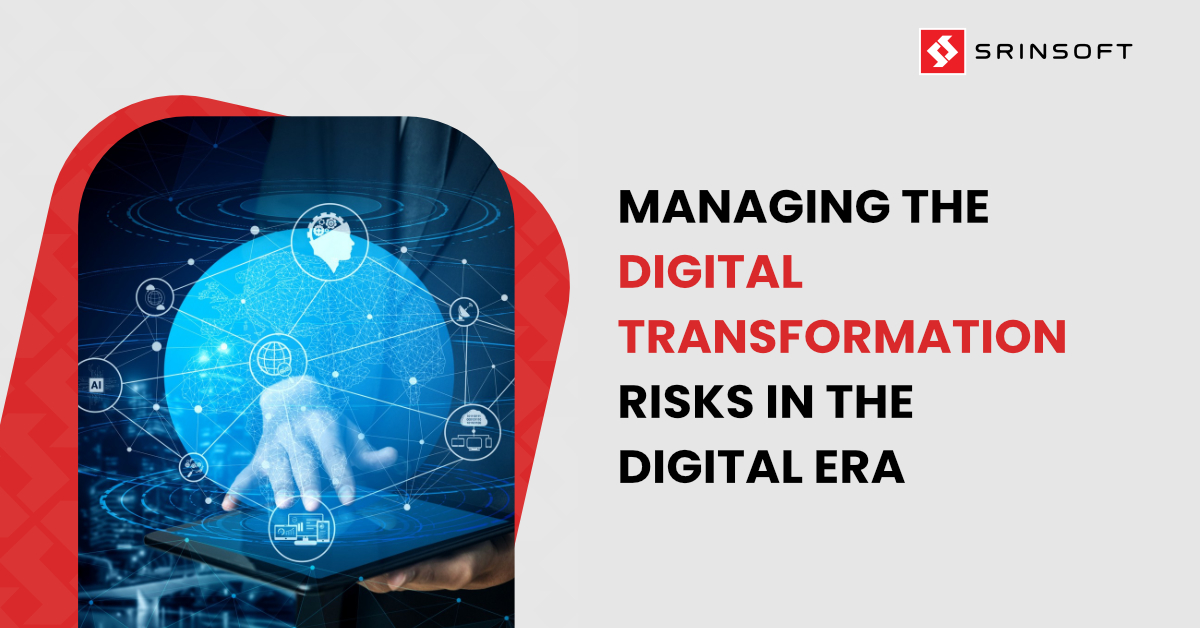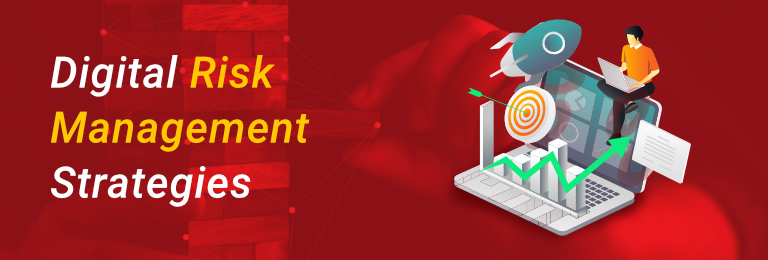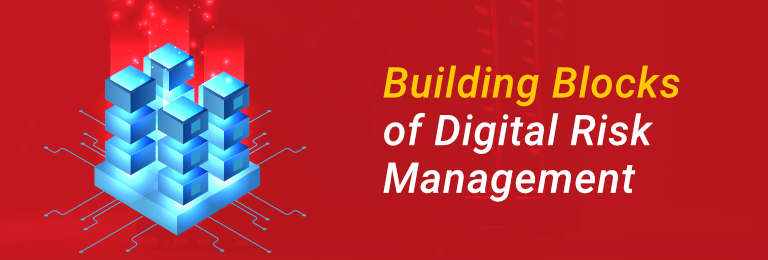
Digital transformation changes how businesses work by using technology to be more innovative, efficient, and grow faster. However Digital Transformation Risks occur when a new technology is introduced into an organization’s tech ecosystem, it can bring new risks along with benefits. To make sure the benefits outweigh the risks, organizations need to manage these risks carefully.
With more and newer technology being used, there are more opportunities for digital risks. This is where digital risk management plays a pivotal role in organizations – it helps find these risks before they cause problems. Digital risk management helps businesses be ready for changes in technology while complying with all the regulatory requirements and safeguarding against threats.
In this article, we’ll talk more about how businesses can manage digital transformation risks and keep their digital transformations on track. We’ll also look at key areas where organizations commonly encounter risks during the digital transformation process.
Understanding Risk Areas for Digital Transformation
Digital transformation introduces a new range of technologies into organizations, which bring with it peculiar benefits as well as risks in operations. The following section details the common areas where organizations tend to face risks in their digital transformation initiatives.
Multi-cloud and Hybrid Cloud Services Risks
Many organizations are adopting multi-cloud or hybrid cloud infrastructures to enhance their ability to respond to market changes. However, using different cloud providers or a mix of public and private clouds makes managing them more complicated. This complexity can make it difficult to ensure that all the security settings are right and follow the regulatory requirements for data security.
Using lots of different cloud services without keeping an eye on costs can end up being more expensive than expected. Without good ways to manage costs, organizations might spend too much money on cloud services, which could hurt their finances. Finally, governance can also be a challenge when using multi-cloud services as it becomes harder to manage governance, risk, and compliance in such an environment. Without clear rules about how cloud services are used, organizations might accidentally break the law or industry rules about data.
Digital Supply Chains and Sales Channels Risks
Transitioning to digital supply chains and sales channels can negatively impact how things usually work and create new problems. If there’s no plan for using different sales channels, the organization might struggle if something goes wrong with the digital ones. Additionally, organizations can also lose sales and face problems in delivering goods or services if digital channels fail and there’s no backup plan.
Working with partners, suppliers, and customers in a digital setup needs clear communication and shared goals. However, if organizations fail to have all the stakeholders on the same page during the switch to digital, it can cause problems and missed chances. If relationships with partners and suppliers break down during the digital changeover, it could lead to missed opportunities and mess up the supply chain.
Internet of Things (IoT) in Digital Transformation Risks
IoT devices can be targets for cyber-attacks if they aren’t secure enough. Cybersecurity loopholes in IoT devices can be exploited to attack a company’s network or steal data or even disrupt operations and steal sensitive information. This can cause severe financial loss and damage the company’s reputation.
Connecting IoT devices to existing systems and making sure they work together can be tricky. If they don’t integrate properly, it can cause problems like data silos and systems not working efficiently. If IoT devices don’t work well with existing systems, it could lead to wasted time and resources trying to fix compatibility issues, and the organization might not get the full benefits of using IoT technology.
Strategies for Digital Risk Management

We know that risks are inherent in any digital transformation risks journey. But for digital initiatives to be successful, it essentially requires robust strategies to mitigate them. Following are some of the well-recognized methods to manage digital risks
Agile Risk Identification and Control
Organizations need to quickly find and manage risks in the digital world. This means keeping an eye on cyber threats and problems with data or operations and acting fast to fix them. In a fully digital environment, organizations will have to go beyond traditional risk management techniques and adopt agile approaches to identify and control risks.
Innovative Risk Identification Methods
Organizations use digital tools like sensors and analytics to spot risks as they happen. These tools give real-time insights into possible problems, so organizations can fix them fast. With the help of such tools that spot risks right away, organizations can respond quickly and prevent problems from getting worse.
Recognition of Specific Risk Areas in Digital Transformation Risks
Businesses need to understand the different areas where risks might pop up, like tech failures, cyber threats, or problems with outside partners. Knowing these areas helps organizations get ready for changes and stop problems before they start. By knowing where risks might come from, organizations can plan better and avoid problems that could hurt their business.
Creating a Cyber Resilience Framework
By developing a framework to handle cyber threats, organizations will be better equipped to deal with them if they happen, including ways to stop them and recover afterward. This plan should also include regular checks to make sure it works.
Conducting a Comprehensive Risk Analysis
It should be an integral part of an organization’s operations to regularly check for all kinds of risks, like problems with networks, keeping data safe, working with outside partners, or mistakes by employees. This helps organizations know what problems might happen and how bad they could be. By knowing which risks are the biggest, organizations can spend their time and money fixing the most important ones first.
Establishing a Cyber Risk Management Framework
An effective long-term strategy to manage digital risks is to develop a cyber risk management framework to find, understand, and stop cyber risks. This plan should include keeping an eye on risks all the time and telling others about any problems that come up.
Leveraging Managed SIEM Providers
Often organizations might not have the in-house capability to handle risks. It is therefore much more feasible to get help from Security Information and Event Management (SIEM) experts who can watch for cyber threats and respond quickly if anything goes wrong. These experts know how to set up and use special tools for spotting cyber threats.
Implementing Access Controls and Data Encryption in Digital Transformation Risks
An important part of ensuring that sensitive data doesn’t slip away is to have access control. Make sure only the right people can see important data through access control and keep sensitive data safe by implementing data encryption.
Building Blocks of Digital Transformation Risks Management
Organizations should harness the foundational aspects of digital transformation risks for a successful digital risk program. This section entails the building blocks of digital risk management.

Data Management
Improving how data is handled through better governance and operating models will improve the quality of data. This means the decisions, both related to risk and business, will be more consistent. One big improvement is to think about the risks associated with the organization’s data and make it a key part of how overall risks are managed.
Process and Workflow Automation
When we talk about process and workflow automation, it’s about using technology to handle tasks automatically. Several routine tasks, which are rules-based and repetitive, are now being handled by Robotic Process Automation (RPA). These tasks are then organized into smart workflows, which are like a sequence of steps performed by both humans and machines. This not only makes things more efficient but also ensures a smoother experience for our customers. As a result of efficient process and workflow automation, risk teams can focus more on activities that add value, leading to better productivity.
Advanced Analytics in Digital Transformation Risks
Advanced analytics uses sophisticated tools to analyze data and automate decisions. With this technology, organizations can build risk models using machine-learning algorithms that can detect complex patterns to detect digital risks. It also enables businesses to make better and faster decisions, especially when it comes to managing risks.
Talent and Culture
Organizations must have the right people and culture to manage digital risks. Organizations will need more people on the team who are good with digital technology and understand risk and business. Instead of hiring new people with these skills, many leaders believe it’s better to train their existing team members to learn these skills.
Conclusion
Digital transformation Risks are an inseparable part of an organization’s long-term strategy for growth and building competitiveness. While digitization comes with risks, businesses shouldn’t shy away from venturing into digital transformation initiatives. Instead, organizations should ensure that they have a robust framework to manage potential risks and come out successful. Failure to have proper strategies to handle the risks due to new digital technologies will not yield the best results from digital transformation initiatives.
Frequently Asked Questions in Digital Transformation Risks
What are the risks of digital transformation?
The potential risks of digital transformation include cybersecurity threats, operational disruptions, data breaches, and even potential reputational damage. Other risks of digital transformation include competence, acceptance by staff, and acceptance by customers and partners.
What are the barriers to digitalization?
The biggest barriers to digital transformation include employee pushback, lack of expertise to lead digitization initiatives, communication and collaboration silos, lack of overall digitization strategy, and limited budget among many others.
What are the phases of digital transformation Risks?
There are three stages of Digital Transformation Risks. The first two stages, modernization, and enterprise-wide transformation are focused on reshaping the existing business. The last phase is about new business creation and uncovering new sources of value.
Why is digital transformation risky?
Digital transformation comes with its own risks in numerous areas. They often relate to security, privacy, and disruption of services. Nevertheless, if they are accounted for and necessary steps are taken to prevent them, these risks may never become an issue.
Why digital transformation is slow?
Digital transformation may not bear the intended results without a clear strategy. Companies may have a hard time identifying which technologies are most relevant to their business needs and how to implement them effectively.


